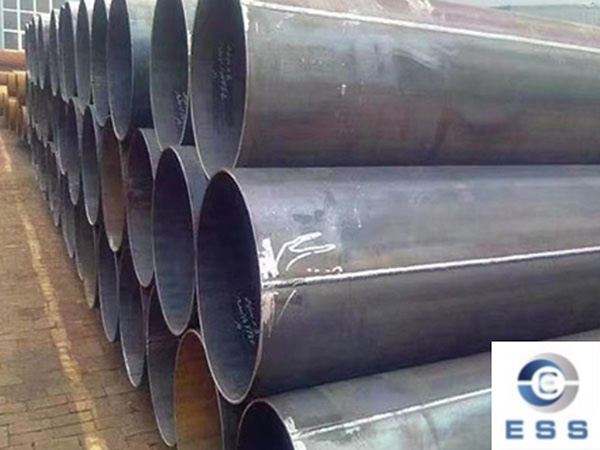What is the residual stress of welded pipe?
Generation of residual stress
The manufacturing of welded steel pipes generally goes through main processes such as uncoiling, straightening, trimming, forming, and welding, as well as a series of auxiliary processes such as flaw detection, flattening, and pressure testing. Part of the residual stress has been generated in the plate during the rolling process, that is, there is residual stress in the plate before pipe making. Processes such as uncoiling, straightening and trimming redistribute existing residual stresses in the sheet and regenerate a small proportion of them.

Effect of residual stress on steel pipe properties
1. Reduce the load-bearing capacity of steel pipes
2. Affect the fatigue strength of steel pipes
3. Residual stress causes stress corrosion cracking
Methods to eliminate residual stress
In addition to minimizing the generation of residual stress during the manufacturing process of welded pipes, various methods can be used to eliminate the residual stress generated. The method used should be selected based on the requirements of the welded pipe and through economic and technical comparisons.
1. Natural aging eliminates residual stress
This method uses natural effects, mainly the effect of temperature differences, to slowly release the residual stress in the welded pipe. Its advantages are simple and easy operation and low cost. The disadvantage is that it takes a long time, takes up a long time in product funds, and the effect is not obvious in the short term.
2. Overall high temperature tempering
This generally involves heating the welded pipe to a certain temperature, then keeping it warm for a period of time, and then gradually cooling it. The effect of eliminating residual stress depends on heating temperature, holding time, cooling rate, etc. In this method, if the tempering parameters are properly selected, the effect of eliminating residual stress will be more significant. However, the overall high-temperature tempering cost is high and difficult to achieve on the production line. Unless there are special requirements, it is generally not suitable to use.
3. Local heating
The effect of this method is not as ideal as overall heating. It can only reduce the peak value of residual stress but cannot completely eliminate the residual stress. The effect of eliminating residual stress is related to the temperature gradient, which in turn is related to the heating range.
4. Mechanical stretching method (overload method)
Each steel pipe must be hydrostatically tested. In general, the pressure should be maintained for a certain period of time after pressurization. The purpose is to check the quality of the welded pipe, and on the other hand, it can also eliminate some residual stress.
5. Other methods
Some welded pipe manufacturers use internal control molding instead of traditional external control molding, and the inner wall of the welded pipe changes from tensile stress to compressive stress. Overall residual stress levels are reduced. In addition, when performing anti-corrosion treatment on welded pipes, sandblasting is used to remove rust, which can also eliminate some residual stress while removing rust.













 Eastern Steel Manufacturing Co.,Ltd not only improve product production and sales services, but also provide additional value-added services. As long as you need, we can complete your specific needs together.
Eastern Steel Manufacturing Co.,Ltd not only improve product production and sales services, but also provide additional value-added services. As long as you need, we can complete your specific needs together.










